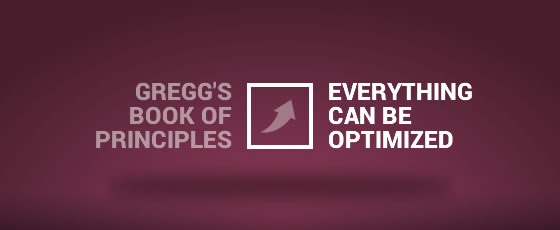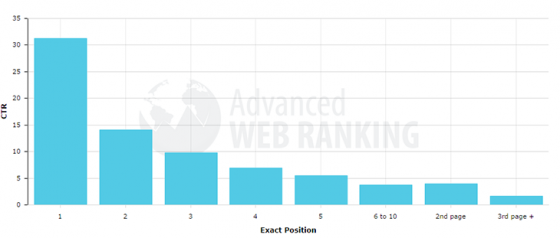Book of Principles
GBOP: There is Always, Always, Always Something on Your Website That Can Be Optimized


BLANCHARD
This is another entry in my “Book of Principles.” To see where this all began, click here. For a full listing of all posts, click here.
The first time I was paid to do online marketing by a business besides my own it was, for lack of a better term, what baseball calls a meatball. A gig that was destined for the home run category.
I had learned some form of intuition from my own projects which meant the stuff I built performed at least somewhat well right out of the box.
What I was presented with, however, had very little semblance of intition or best practices or…well…anything besides lots and lots and lots of copy. So, I rolled up my sleeves and went to work.
What Work Was
It’s always interesting to find out what “work” actually entails for different professions and jobs. But in this case, almost all of my work was focused on one thing: finding things to optimize and then optimizing them.
First I optimized the site. Then I optimized the search results. Then I optimized the email follow up campaign. And slowly I learned…
“There is always, always, always something that can be optimized.”
Every change increased traffic, increased conversions, and, ultimately, increased sales by 1200+% while I worked with them simply by always finding something new to optimize.
Example #1) Default State
A side project of mine featured an opt-in form that asked for little more than an email address and state. I had tried a bunch of different headline and copy combinations, but I wondered about whether the task of finding a state from a 50-item dropdown in such a simple form was getting in the way.
So, I used an IP address database to prepopulate the state field with the state they were in right then. Only about 15% of form-submitters changed the state and overall opt-in rates went up about 2%.
Example #2) Up One Place
The difference between going from #2 to #1 in the SERPS is much greater than #4 to #3 or #3 to #2 or any other 1-place jump as this chart from Marketing Land illustrates.

Source: Marketing Land
So I once focused solely on a client’s #2 rankings and tried to get them to #1. Turns out it wasn’t as hard as I thought and the 2.5x traffic from those keywords translated into, you guessed it, 2.5x the sales from those keywords.
Conclusion
We often think of just the second half when we discuss this topic, but the work of optimization actually has two parts: finding things to optimize and then optimizing them. So, ask yourself:
“Which piece of my online marketing plan plays a major role in conversion? And what can I do to help it play that role a little bit better?”
The answer will never be “nothing.”
And because website performance is a collective effort of hundreds of elements, if you can improve any one piece of the process you’ll increase the revenue that comes out the other side.
About Gregg & SlopeFillers
I've had more first-time visitors lately, so adding a quick "about" section. I started SlopeFillers in 2010
with the simple goal of sharing great resort marketing strategies. Today I run marketing for resort ecommerce and CRM provider
Inntopia,
my home mountain is the lovely Nordic Valley,
and my favorite marketing campaign remains the Ski Utah TV show that sold me on skiing as a kid in the 90s.
Get the weekly digest.
New stories, ideas, and jobs delivered to your inbox every Friday morning.
